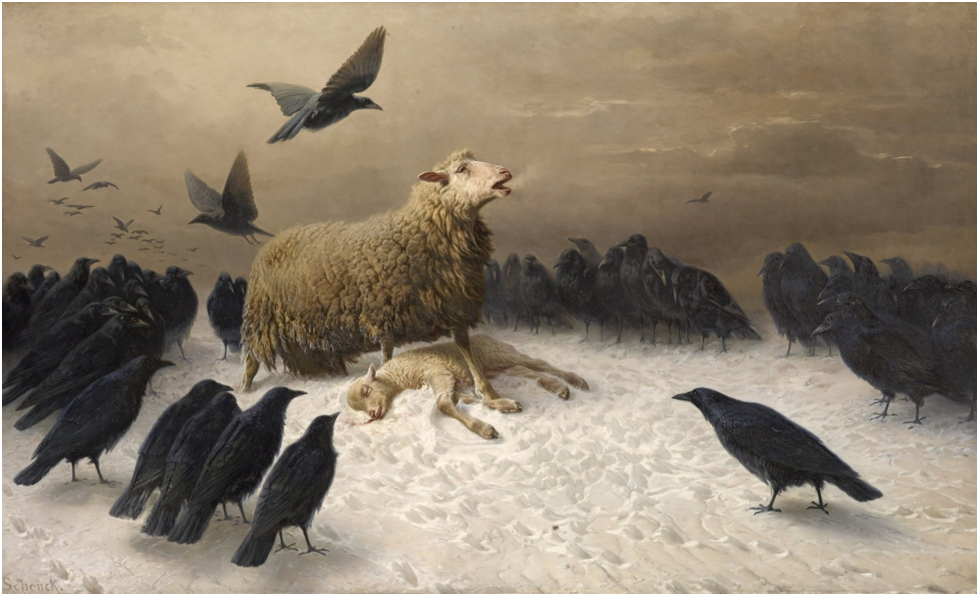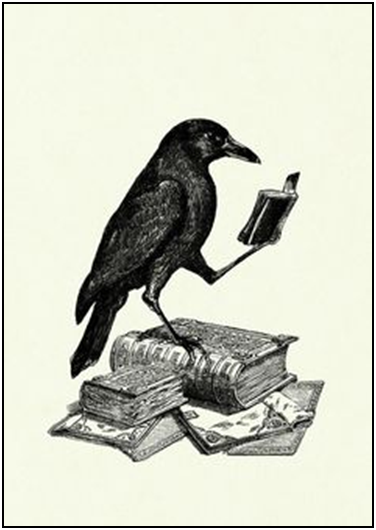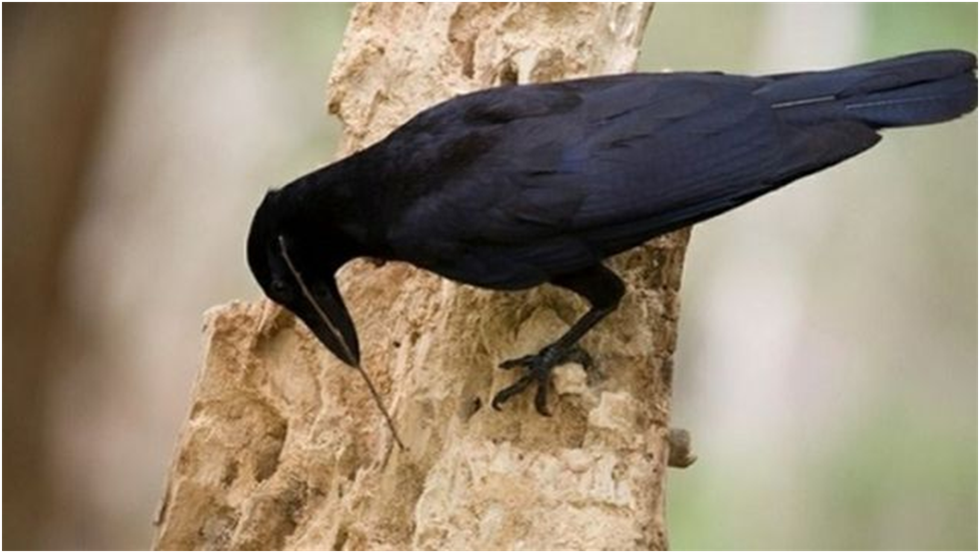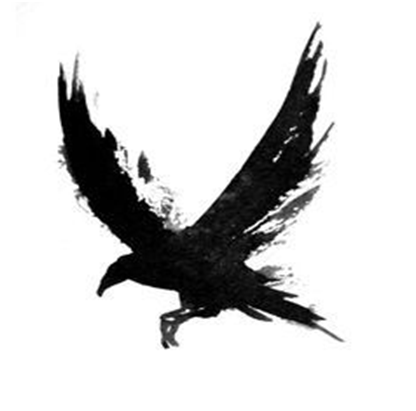I’m watching you.
Every week, I’m asked to write a blog about wildlife and every week I sigh and grumble for a few days. The writing game is new to me and I don’t know whether I am alone, or is it a common struggle to find novel ideas or motivation? Grumbling aside, I eventually found inspiration.
I recently made an identification sheet of Corvidae for a gentleman short of sight. It was made on an A4 sheet so that he could identify the different types of crows outside of his care-home window – big pictures, bold text, etc. I had to be clear and concise, while including enough to distinguish between the black coloured birds.
Anyway, I was asked to write a blog about this, and I objected, thinking my altruism wouldn’t be particularly interesting for readers. Who wants to read about how great I am, seriously? Nevertheless, I did have to produce a blog. I’m getting paid to work after all – I should probably do something… apparently.
I decided to look a little further into what was interesting about the Corvidae family. They’ve always intrigued me, with their distinctive course ‘craws’ and ominous demeanour. Furthermore, if you’re familiar with Game of Thrones (GoT), you’ll be aware of the significance of crows throughout the series. There is so much to say about these birds, and if I was paid lots of money, I would happily do a thesis on their behaviour. However I have other responsibilities here at the basin, so this is merely a snapshot of what I could pull together. If you enjoy and want to know more, I highly recommend watching “The Secret Life of Crows” on Youtube.
So. What I found is that some people don’t particularly like crows – more than just Wildlings, ha ha ha… (bad GoT joke). Biologist, Louis Lefebvre, gives an explanation, “We are omnivores and we’re social; crows are omnivores and social. That’s probably one of the reasons humans don’t like them, we’re too similar. They’re opportunistic, and so are we. They are invasive, and behave in a way that humans also do, but are not proud of, i.e. feed on garbage.”
Historically, it seems that the long cultural interaction we have had with crows has been a negative one. Lebebvre and others go further, illustrating how this relationship has seeped into modern culture. “Whenever anything bad happens on TV, there’s always the sound of a crow, lurking nearby!” Whoever named the collective of Corvids was also clearly influenced by the widespread negativity. The collective for a Raven is “an unkindness of”, and for the Carrion Crow – “a mob of” or “a murder of”. Charming indeed.

Negativity aside, there are further similarities we share with crows. Crows create mating pairs, stay relatively monogamous, have extended families that help out with the young, and have wide social groups. Perhaps similarly to how we may have acted in hunter-gatherer times, the whole crow family take turns standing guard over the young and scaring off nearby predators. Furthermore, juvenile crows spend a long time with their parents, longer than most other bird species. During this time, the young watch, learn and remember from their parents, providing them with the crucial skills that will increase their chance of survival.
Crows can also learn a lot from each-others misfortune. For example, if a fellow crow is killed in a farmer’s field, the group may change their entire migratory pattern for up to two years. I witnessed first-hand, the degrading display of a dead crow, stapled to a post in the middle of a field when roguing, done with the intention to warn off any other crows from coming near. Although I found this disturbing, it works. It’s the modern day ‘scarecrow’.
This brings me to my main point, the defining quality that really separates crows from the rest of the bird species is their intelligence. Crows do not have the biggest brains among birds – parrots have – but crows are by far one of the most intelligent.

For example, one study showed that the pitch and volume of a crow’s craw changed when danger approached. For the study, researchers investigated crow’s nests wearing masks, which the crows learned to identify – in a single visit. When the researchers returned without the masks, the crow’s craws seemed to be normal, a little excited, but normal. When the masks were brought out, however, things changed drastically. The researchers were not only verbally assaulted; the crows swooped and dived, to avert the researcher’s course.
Crows possess an evolutionary advantage that only a handful of other species possess also. The have the ability to teach their young who is dangerous, without the young experiencing the danger first hand. The ability of crows to recognize is so great, that the US department of defence has begun funding studies like these. The hope is that they can utilise the bird’s ability to recognize for pointing out the bad guys, in areas outside the bird world. That would really give a new meaning to the Black Watch.
Within the crow family, one bird stands above the rest for me – the Raven. I believe Ravens are underrated. They’re so distinctive and bad-ass, with shaggy throat feathers and a huge intimidating beak. Their deep, very gruff croaking call really tops off their already rocker/biker like characteristics. On top of being handsome and awesome physically, their intelligence is what makes them my favourite bird species. Anyone can be muscled and intimidating (we see this often in human society), but having brains as well is far more impressive.
When it comes to intelligence, ravens are up there with chimpanzees and dolphins. In one logic test, the raven had to get a hanging piece of food by pulling up a bit of the string, anchoring it with its claw, and repeating until the food was in reach. Most ravens got the food on the first try and others within 30 seconds. Like chimpanzees, New Caledonian Crows use tools.

Examples from the wild also show their cunning and creativity. Ravens have been reported to have pushed rocks on people, keeping them from climbing to their nests. Others report seeing ravens pulling a fishermen’s line out of ice holes to steal the caught fish. One of the even more impressive behaviours reported, is when a raven wants to scare off others from a beaver carcass, the bird will play dead next to it, deterring others from approaching his/her spoils.
As pets, ravens can learn to talk better than some parrots. They also mimic other noises, like car engines, flushing toilets, animals and other birdcalls. In the wild, it’s been reported that Ravens imitate wolves or foxes to attract them to carcasses if the raven isn’t capable of breaking it open.
Fundamentally, adaptability is the key strength for Ravens, and crows. I think we could all learn a great deal from crows, especially these days. Whether I’m a closet Goth or rock star is still up for debate, but something draws me to the crow family. Maybe I associate myself with them, or more likely, envy them. They’re the outsiders and outlaws of the bird kingdom, hated by the other species but also feared and respected.
So keep your eyes and ears open next time your outside, the chances are, you’re probably being watched.

Benedict George Murray, Visitor Centre Assistant
Help protect Scotland’s wildlife
Our work to save Scotland’s wildlife is made possible thanks to the generosity of our members and supporters.
Join today from just £3 a month to help protect the species you love.
Preface
Every week, I’m asked to write a blog about wildlife and every week I sigh and grumble for a few days. The writing game is new to me and I …
